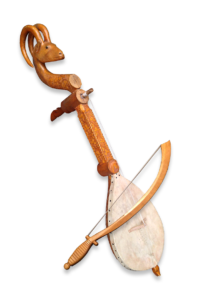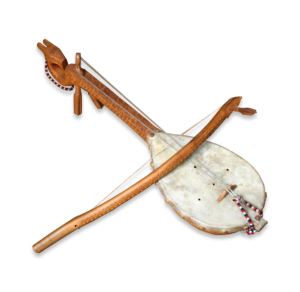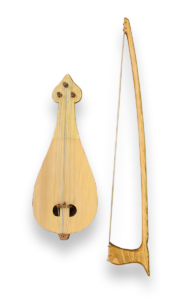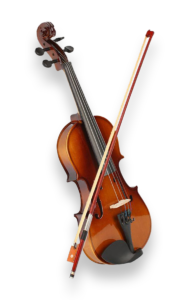INSTRUMENTS WITH BOW
Gudačka glazbalaINSTRUMENTS WITH BOW
Gudačka glazbala
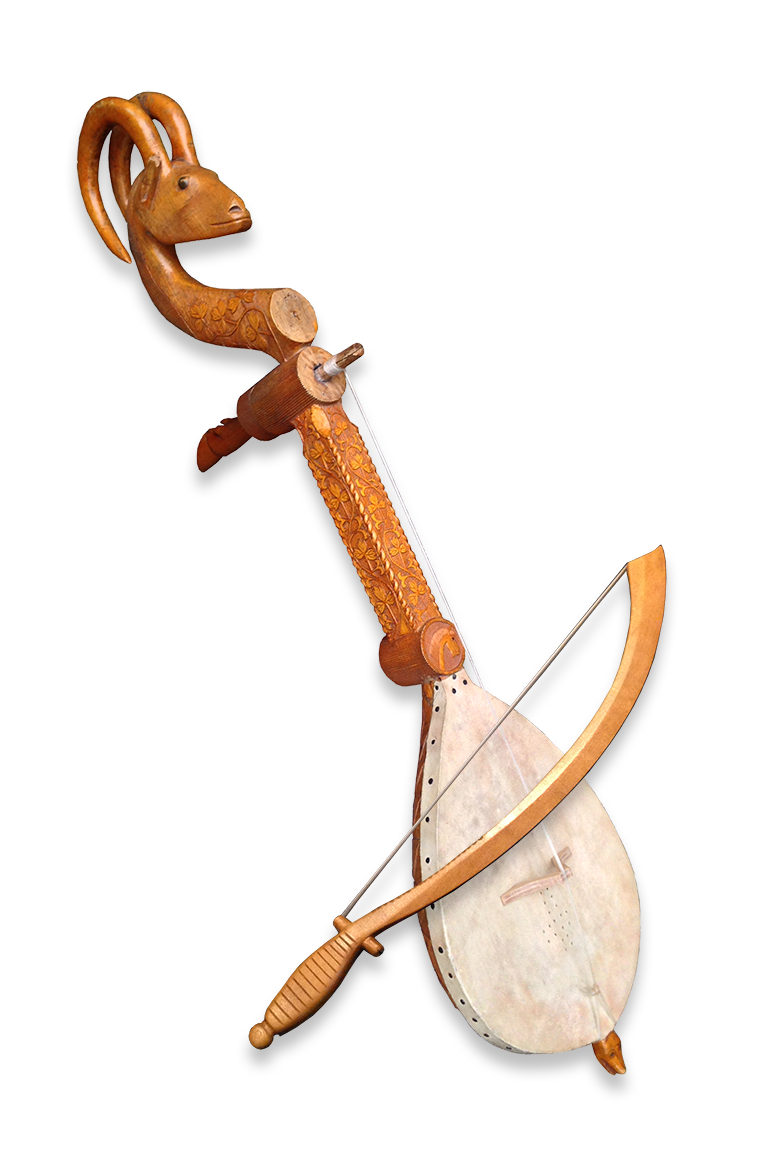
GUSLE
Gusle su prastaro kordofono glazbalo za koje se pretpostavlja da su ga hrvati poznavali još i prije dolaska u krajeve današnje Hrvatske. Gusle najčešće imaju jednu žicu, za sviranje se koristi gudalo, a uz svirku gusli najčešće se pjevaju epske pjesme o povijesnim ili aktualnim događajima i osobama.
Gusle su nekada bile rasprostranjene širom Dalmacije, Dalmatinske Zagore, po Primorju, uz dolinu Neretve te na nekim otocima. Gusle su, osim u Hrvatskoj, kao tradicijsko glazbalo prisutne još i u Crnoj Gori i Srbiji.
Naziv “gusle” dolazi od staroslavenske riječi “gosl” što znači “žica”. Praslavenski je korijen gǫdsli a u svezi je s riječju guditi.
Gusle se najčešće izrađuju od jednog komada drveta, jako lijepo su ukrašene te su pravi primjer nevjerojatnog bogatstva narodne umjetnosti.
THE FIDDLE
The fiddle is an ancient chordophone instrument, which is assumed to have been known by Croatians even before they arrived in today’s Croatia. Fiddles usually have one string, a bow is used for playing, and epic songs about historical or current events and people are usually sung along with fiddle playing.
Fiddles used to be widespread throughout Dalmatia, Dalmatian Zagora, along the coast, along the Neretva valley and on some islands. In addition to Croatia, fiddles are also present as a traditional musical instrument in Montenegro and Serbia.
The name “gusle” comes from the Old Slavic word “gosl” which means “string”. The Proto-Slavic root is ”gǫdsli” and is related to the word ”guditi”.
Fiddles are most often made from a single piece of wood, they are very beautifully decorated and are a true example of the incredible wealth of folk art.
GUSLE S DVIJE ŽICE
Gusle s dvije žice su po svemu identične ”običnim” guslama s tom razlikom što umjesto jedne, za sviranje koriste dvije žice. To je vrlo rijedak oblik gusli i jedinstvena pojava u malom području Dalmatinskog zaleđa.
THE FIDDLE WITH TWO STRINGS
Two-stringed fiddles are in all respects identical to “ordinary” fiddles, with the difference that instead of one, they use two strings to play. It is a very rare form of fiddle and a unique phenomenon in a small area of the Dalmatia.


LJERICA
Ljerica je kordofono glazbalo s tri žice za sviranje i gudalom. Nekada je ljerica u raznim varijantama i oblicima bila raširena duž skoro cijele Jadranske obale sve do Istre, a danas se svira još samo u Konavlima, Dubrovniku i okolici, istočnoj Hercegovini, Pelješcu te otocima Lastovo i Mljet. Uz svirku na ljerici najčešće se pleše vrlo atraktivan ples – poskočica.
Slična glazbala našoj ljerici još postoje u Sjevernoj Makedoniji (ćemane), Bugarskoj (gadulka) te na Kreti (lira).
LJERICA
Ljerica is a chordophone instrument with three playing strings and a bow. In the past, ljerica in various variants and forms was spread along almost the entire Croatian Adriatic coast all the way to Istria, and today it is still played only in Konavle, Dubrovnik and its surroundings, eastern Herzegovina, Pelješac and the islands of Lastovo and Mljet. A very attractive dance – poskočica – is usually danced along with playing the ljerica.
Similar musical instruments to our ljerica still exist in North Macedonia (ćemane), Bulgaria (gadulka) and Crete (lyra).
LJERICA S LASTOVA
Ljerica s otoka Lastovo je po osnovnim elementima identična svim ostalim ljericama. Jedina specifičnost je veličina ljerice u odnosu na gudalo. Lastovska ljerica je jako mala, a gudalo je veće nego kod ostalih tipova ljerica. To je zbog specifičnog načina sviranja na otoku Lastovu.
LJERICA FROM LASTOVO ISLAND
Ljerica from the island of Lastovo is identical in basic elements to all other ljerica. The only specificity is the size of the ljerica in relation to the bow. The ljerica from Lastovo is very small, and the bow is larger than that of other types of ljerica. This is due to the specific way of playing on the island of Lastovo.
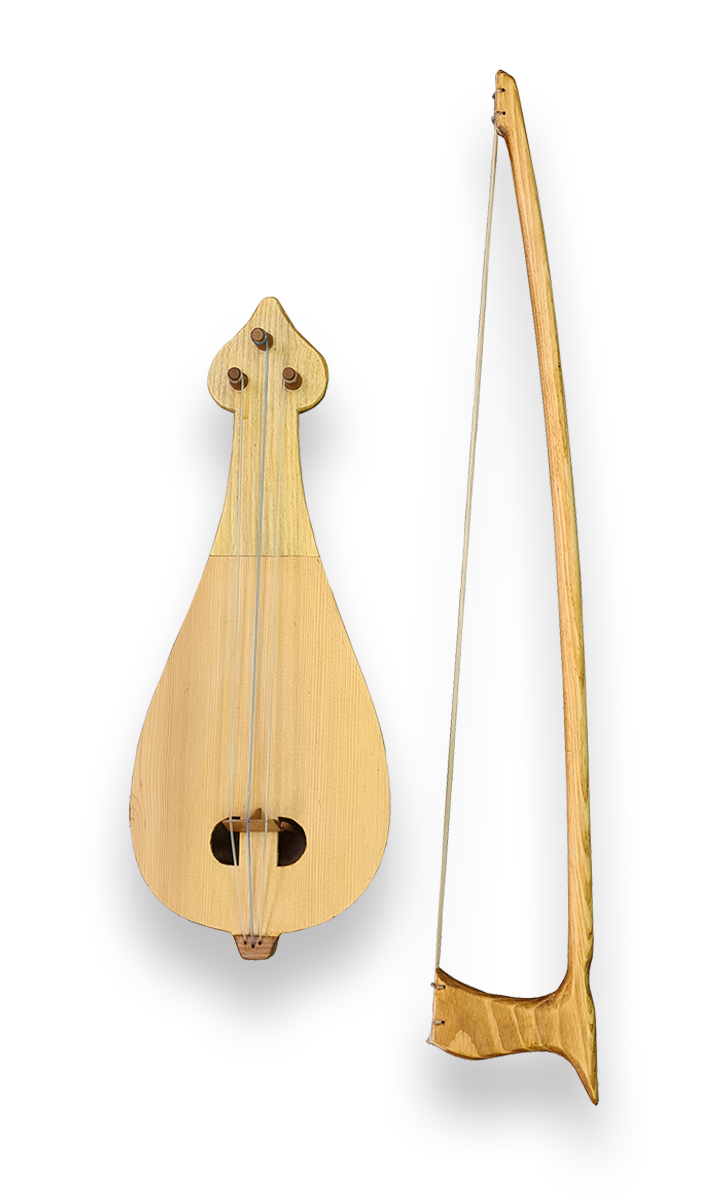

VIOLINA
Violina nije tipično tradicijsko glazbalo, nije nastala u narodu premda su preteče violine tradicijska glazbala tipa gusli i ljerice. Ipak, ušla je u našu tradiciju, svirali su ju i izrađivali narodni svirači širom kontinentalne Hrvatske. Violina je svirana u raznim kombincijama s ostalim tradicijskim glazbalima (dude, gajde, cimbal, tambure, fajfa, itd.). U sjeverozapadnim krajevima Hrvatske su bili popularni glazbeni sastavi s kombinacijama dvije ili tri violine, cimbal, bajs i kontra.
Hrvati u Bosni i Hercegovini su najčešće sami izrađivali violine te ih naštimavali na drugačiji način nego klasične.
Premda se violina smatra tipičnim klasinčnim glazbalom, važan je dio hrvatske tradicijske glazbene kulture.
VIOLIN
The violin is not a typical traditional musical instrument, it was not created by the village people, although the predecessors of the violin were traditional instruments of the fiddle and ljerica type. Nevertheless, it entered our tradition, it was played and made by folk musicians throughout continental Croatia. The violin was played in various combinations with other traditional instruments (bagpipes, dude, cymbals, tambourines, fife, etc.). In the north-western parts of Croatia, musical ensembles with combinations of two or three violins, cymbal, bass and tambura were popular.
Croats in Bosnia and Herzegovina usually made their own violins and tuned them in a different way than classical ones.
Although the violin is considered a typical classical instrument, it is an important part of Croatian traditional musical culture.
ISTARSKI BAJS
Bajs je kordofono narodno glazbalo s dvije žice od goveđih crijeva i gudalom. Bajs je manji od kontrabasa, a veći od violončela. Žice su ugođene u kvintama.
Pretpostavlja se da se, kao tradicijsko glazbalo Istre, bajs počeo koristiti prije otprilike 150 godina. Vrlo brzo se udomaćio te je bilo dosta vrsnih majstora izrađivača i svirača bajsa. Najčešće se koristio u kombinaciji s violinom (sastav zvan gunjci), a kasnije i s drugim tradicijskim glazbalima.
ISTRIAN BAJS
Istrian bajs is a chordophone folk instrument with two strings made of beef intestines and a bow. The bajs is smaller than the double bass and bigger than the cello. The strings are tuned in fifths.
It is assumed that, as a traditional musical instrument of Istria, the bajs began to be used approximately 150 years ago. It settled in very quickly and there were quite a few excellent master makers and bajs players. It was most often used in combination with the violin (gunjci), and later with other traditional musical instruments.
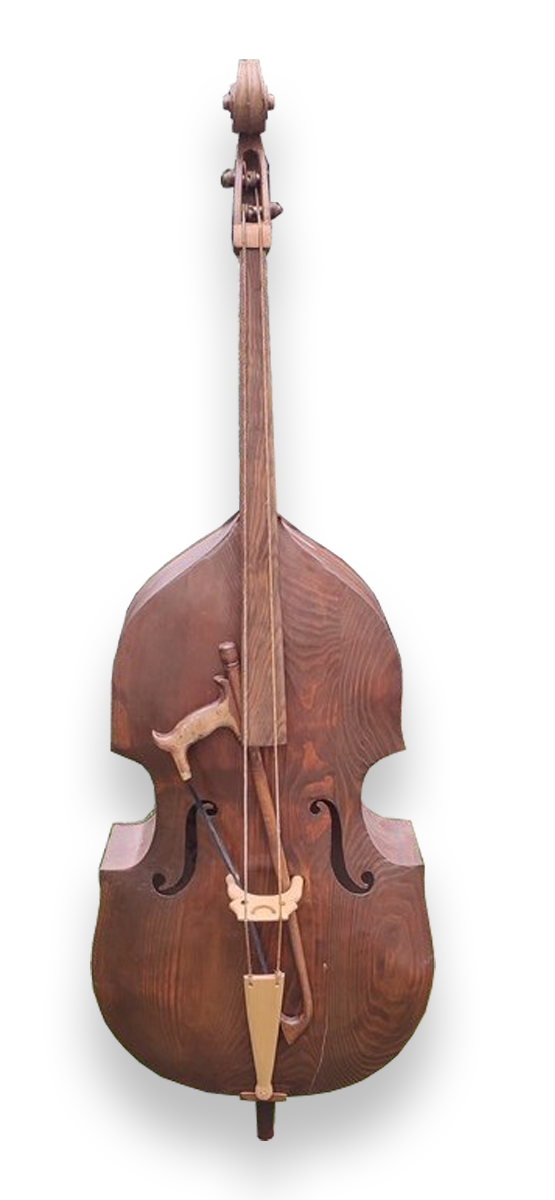
INFORMACIJE
Ovo su samo najosnovnije informacije o pojedinim glazbalima. Za sve detaljnije informacije slobodno nam se obratite.
KONTAKT:
Stjepan Večković
CENTAR ZA TRADICIJSKA GLAZBALA HRVATSKE
CENTRE OF CROATIAN TRADITIONAL INSTRUMENTS
Email: gajde.hr@gmail.com
Mob: +385 98 275 211
INFORMATION
This is only the most basic information about individual musical instruments. Feel free to contact us for more detailed information.
